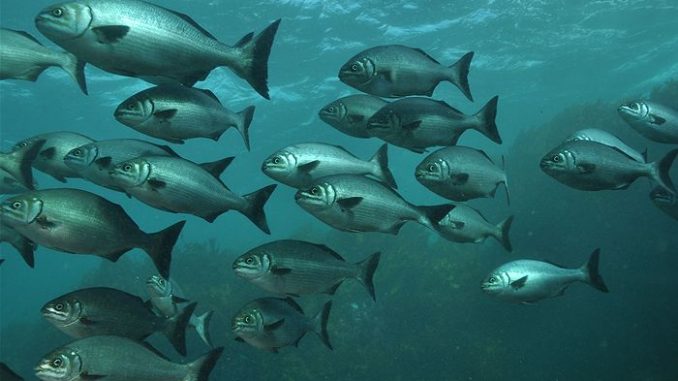
Fishes migration
- In ecology, it is an animal behaviour of mass movement of animals from one place to another.
- The purposes for migration varies accordingly with the types of animals.
- Migratory behaviour of fish is a regular phenomenon. Their journey is purposed mainly for feeding and reproduction.
Types fish migration on the basis of needs:
- Alimentary or Feeding migration: migration for search of feeding ground. It occur when food resources get exhausted.
- Gametic or spwaning migration: it occur during breeding season in search for the suitable spawning ground.
- Climatic or seasonal migration: migration in search for suitable climatic condition.
- Osmo-regulatory migration: migration for water and electrolytes balance from sea to fresh water and vice-versa.
- Juvenile migration: it is larval migration from spawning ground to the feeding habitats of their parent.
Movement of fishes during the migration
- Drifting movement: It is a passive movement of fish along with water currents
- Dispersal movement: It is a random locomotory movement of fish from a uniform habitat to diverse direction
- Swimming movement: It is an orientated movement of fish either toward or away from the source of stimulus
- Denatant and Contranatant movement: It is an active swimming movement. Denatant movement is swimming with the water current while contrantant movement is swimming against water current
Types of fish migration
The migration of some fishes is a regular journey and is truly an innate animal behaviour. Fish migration are classified into following types:
1. Diadromous migration:
- it is the migration of fish between sea and fresh water.
- As we know, most of the fishes are restricted to either fresh water or sea water. Changes in habitat may causes osmotic imbalance in those fishes. However some fishes regularly migrate between sea and fresh water and have perfect osmotic balance, they are the true migratory fish.
- This migration is of two types-
i. Anadromous migration:
- it is the migration of marine fishes from sea to fresh water for spawning.
- Fishes spend most of their life living and feeding in sea.
- They only migrate during breeding season to the river for spawning ground.
- Eg. Salmon, Hisla, Lamprey etc.
- Salmon migrate for breeding during winter from sea to river. While migrating, some physiological changes occurs:
- – stops feeding during journey
- – changes colour from silver to dull reddish brown
- – gonads mature
- They select suitable spawning ground and make a saucer-like nest in which female lays eggs and male releases smelt over them. Juvenile larva hatched out from the egg known as Alevins. Alveins then transform into parr and metamorphosed into adult when return to the sea.
ii. Catadronous migration:
- It is the migration of fresh water fishes from river to sea during breeding season for spawning. Eg. Eel (Anguilla spp)
- Both European eel (Anguilla anguilla or Anguilla vulgaris) and the American eel (Anguilla rostrata) migrate from the continental rivers to Sargasso Sea off Bermuda in south Atlantic for spawning, crossing Atlantic Ocean.
- Before and during migration some physiological changes occur in their bodies:
- – deposit large amount of fat in their bodies which serves as reserve food during the journey
- – Colour changes from yellow to metallic silvery grey.
- – Digestive tract shrinks and stops feeding
- – Eyes get enlarged and vision sharpens. Other sensory organs also become sensitive.
- – Skin serves respiratory organ.
- – Gonads get matured and enlarged.
- The lay eggs in suitable spawning ground and are fertilized by males. After spawning they die. The larva hatch out and develop into young ell and finally return to river.
2. Potamodromous migration:
- it is fresh water migration of fresh from one habitat to another for feeding or spawning.
- Eg. Carps, catfish
3. Oceanodromous migration:
- It is the migration of fish within sea in search of suitable feeding and spawning ground.
- eg. Clupea, Thummus, Tuna
4. Latitudinal migration:
- it is the migration of fish from north to south and vice-versa.
- It is a climatic migration.
- Eg. Sward fish migrate north in spring and south in autumn.
5. Vertical migration:
- it is a daily migration of fish from deep to the surface and vice-versa for food, protection and spawning.
- Eg. Sward fish usually move vertically downward to greater depth for food.
6. Shoreward migration:
- it is the migration of fish from water to land. However it is a temporary migration.
- Eg. Eel migrate from one pond to another pond via moist meadow grass.
Significance of fish migration
- to find suitable feeding and spawning ground
- for protection from predators
- survive from extreme climatic conditions
- increases genetic diversity
- it is an adaptational characters for survival and existences
